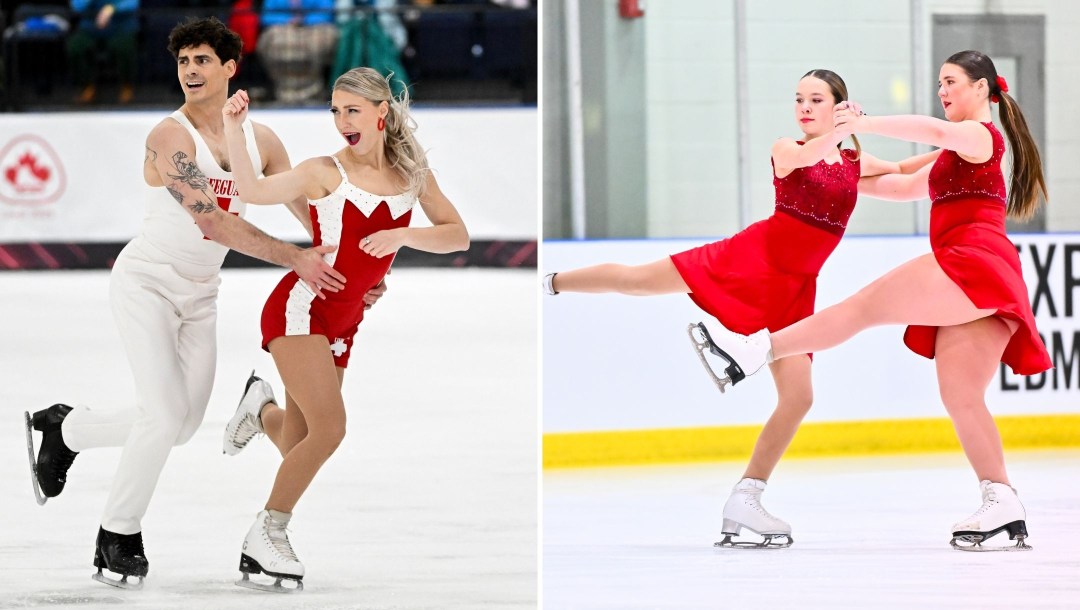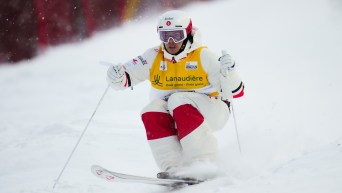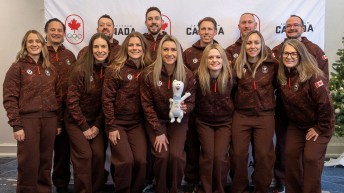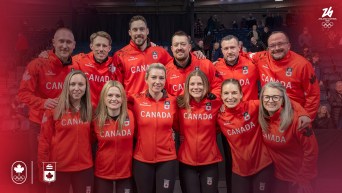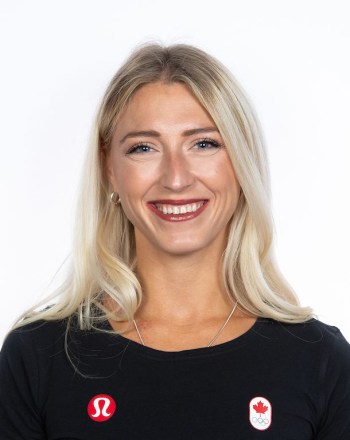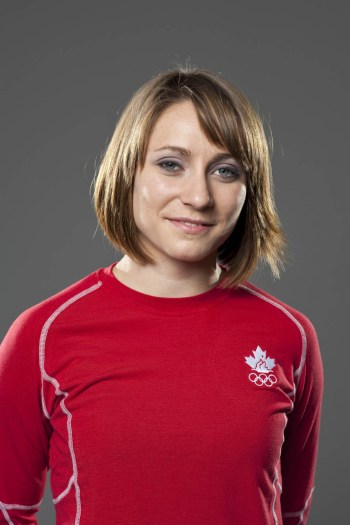How figure skating is developing beyond its heteronormative history
When Paul Poirier began competing on the senior international ice dance scene more than 15 years ago, there were no athletes who openly identified as 2SLGBTQI+ actively competing in figure skating.
As Poirier heads towards his fourth Olympic Games, he is among some of the biggest stars in the sport who have chosen to no longer hide a part of themselves while they compete for Olympic medals.
“In the space of visibility and representation, there’s been a lot of progress and change in that time,” Poirier recently reflected in an interview with Olympic.ca.
“For a very long time, I had a very large separation between my life, day to day as an athlete being at the rink, and the rest of my life. I personally had this wall up and kind of like two selves existed on very different planes.”
Since coming out in 2021, ”It’s changed my mentality day to day in terms of how I bring myself to the rink,” he said. “It might have been self imposed, but there was a pressure to maintain a level of professionalism where I show up and I skate and this is my job and the rest of myself doesn’t really matter in the context of my work. Then I go home and I get to live my life. And for me, it’s been really gratifying to pull that wall down a little bit and feel more cohesive as a person and to feel that all the facets of my life feed each other and are relevant to each other.
“I get to feel like my skating and what I do and the art I create informs how I live in the world and vice versa, and that’s really rich and rewarding in a lot of ways.”

With ice dance partner Piper Gilles, Poirier has won four world championship medals, including back-to-back silvers in 2024 and 2025. In recent years, their competitive program themes have shown impressive range. After a successful series of what they called their “programs for the people” skated to songs such as “Vincent” and “Both Sides Now”, they performed the stories of Evita and Wuthering Heights in their free dances before tackling a tango-ish take on Annie Lennox’s “Whiter Shade of Pale” this past season.
READ: Piper & Paul and Evita: A dance a decade in the making
“Piper and I, we’ve really enjoyed exploring storytelling and that storytelling has existed a lot of times on the outside of a romantic story as a man and a woman falling in love, which is something we see so much, not only in ice dance but I think in dance in general and media and movies and books and art in general, because it’s such a human experience. But it’s been really interesting for us to explore telling other kinds of stories. And you’re seeing other couples as well that are exploring telling other kinds of stories,” Poirier said.
Legacy of love stories
It’s probably not a stretch to say that, for many Canadians, the quintessential performance that comes to mind when they think about figure skating is the Moulin Rouge free dance that was Tessa Virtue and Scott Moir’s vehicle to win Olympic gold at PyeongChang 2018.
It created a firestorm of commentary on social media, beyond the usual figure skating fandom, as people were drawn to the passion and intensity they displayed while performing intricate and very technically difficult elements.
It prompted a flurry of questions about their relationship. How could anyone showcase that kind of chemistry and emotion on the ice and not be a couple off of it?
Two-time Olympian Kaitlyn Weaver knows all too well what it feels like to be on the receiving end of those questions. It goes hand in hand with the heteronormativity long expected in ice dance. It also played a part in why she didn’t come out as queer until 2021, two years after she last competed internationally with partner Andrew Poje.
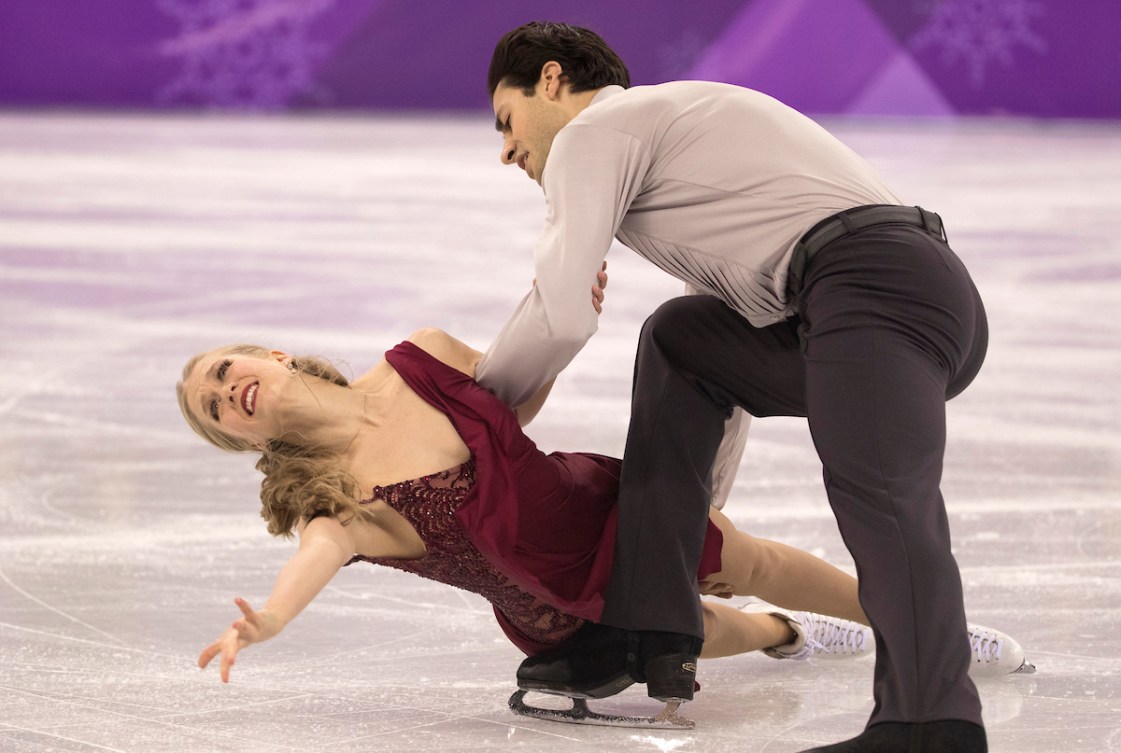
“Are they in love? Are they going to get married? Are they dating? That’s the number one question that Andrew and I were asked for 20 years and sometimes still and the truth is that we have a beautiful connection and amazing chemistry and I love him with all my heart. So that was the really confusing part for me, just even as a person, as an athlete to be like, okay, how do I navigate this when my job is to be in love with this man in front of thousands of people?” Weaver recalled to Olympic.ca.
“We are a man and a woman and we were very good at telling love stories and I didn’t want anyone, whether it’s the judging panel—which obviously controls my fate, in a way—to the fans, audiences in general, to think that I was faking it, to think that I was lying […] I didn’t want to do that to myself and I didn’t want to do that to Andrew.”
In the post-competition phase of her life, Weaver is still very much involved in figure skating. She now works primarily as a choreographer but is also the appointed skater representative on the ISU Ice Dance Technical Committee. While it’s a huge honour and privilege, Weaver acknowledges it also comes with a lot of pressure.
“I look at life through a social justice lens and that impacts everything I do,” she explained. “So when I’m looking at the vision for the future of our sport, I can’t help but notice the people that are missing. And what can we do as a technical committee to encourage gender equity, to not only encourage but make it at least as far as we can.”
Change of rhythm
One of the responsibilities of the technical committee is to prescribe the theme for the rhythm dance each season. During the 2017-18 season, every ice dance team had to skate to Latin American rhythms such as the samba, rhumba, and cha cha. The next season, a tango was required to be included. That was followed by a Broadway theme in which a quickstep, charleston, or swing rhythm was mandatory.
But in the last couple years, there has been a trend towards decade themes, with “Music and Feeling of the Eighties” prescribed for the 2023-24 season, followed by “Social Dances and Styles of the 1950s, 1960s and 1970s” for the 2024-25 season. Looking ahead to the Olympic season, the rhythm dances at Milano Cortina 2026 must all reflect “The Music, Dance Styles and Feeling of the 1990s”. Among the examples given by the ISU are pop/street latin, house/techno, hip hop, and grunge rock.
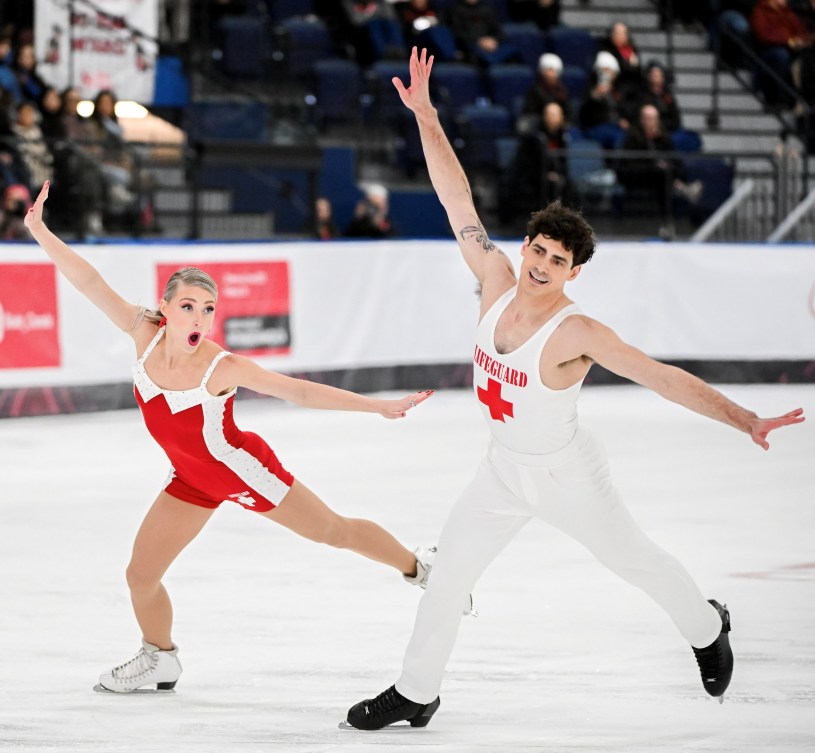
Weaver says the move to decade themes was in the spirit of opening gender roles in ice dance, encouraging more individual movement rather than the strict lead-and-follow traditionally associated with men and women in ballroom dancing, in which ice dance has its roots.
“There’s space then for the skaters to explore being different, finding themselves, being the most authentically them,” she explained.
As an “old school” ice dancer who admits that he misses compulsory dances and their required patterns, Poirier would have liked those themes based on popular music to have been broken up a little bit, rather than be featured for several years in a row. “But I do think it gives a chance for us to explore other kinds of dance that traditionally in ice dance you would not have seen very often, and that’s exciting as well.”
Some longtime figure skating fans have been vocal online about missing the waltzes, foxtrots, and quicksteps that have now taken a backseat. Weaver doesn’t doubt that they will return in the not too distant future. But the hope is that the next time one of those traditional ballroom dances is prescribed, skaters will approach it in a “fun and fresh way” and not feel pressured to revert to traditional gender roles.
“In the last couple years, the [programs] that do really stand out are being rewarded, so I think that the skaters are slowly but surely getting the feedback that we as a committee want to support you in this,” she said about trying to encourage individuality rather than replicating what has worked for other teams in the past.
Room for more than romance
Doing what feels authentic to them is the approach Gilles and Poirier have always taken when it comes to their program concepts and choreography, which has led to them gaining a reputation as an innovative team.
“Our creative process is always led by the question ‘what is possible?’ and we really go by the rule of no idea is a bad idea. Just throw all your zaniest things onto the table, let’s sift it out, let’s work through things, let’s figure out what’s interesting and what’s possible,” he explained. “I think if we have done programs that have stepped away from the traditional romantic narratives that we’ve often seen in ice dance, that’s just been an extension of who we are and what we find interesting.”
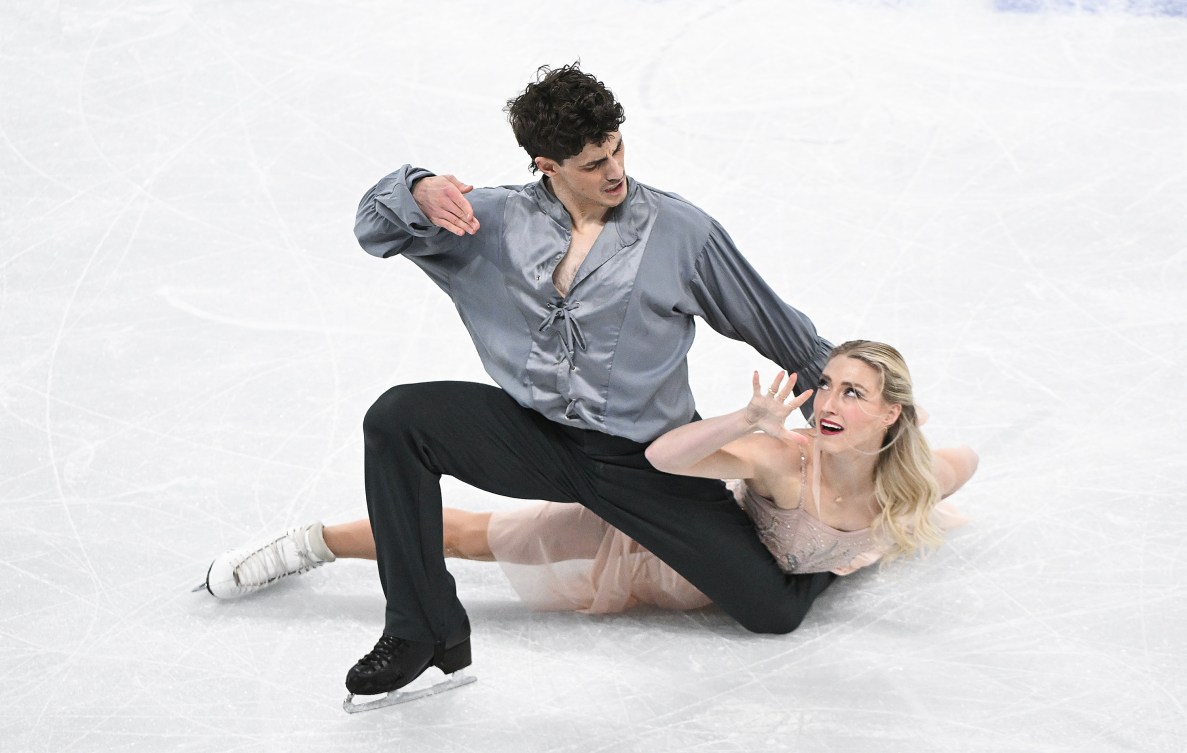
Weaver says that skaters need to not be afraid that judges and audiences can value different storylines and Poirier agrees that it’s been good to see a “larger vocabulary of dance”.
“To me, the magic of ice dance is diversity more than anything. And so, what I’ll call those traditional heteronormative stories are also important,” he said. “In the end, the best thing for ice dance is variety, so the more kinds of dances we can see, the more kinds of movement we can see, the more kinds of music we can use, the more kinds of stories we can present and consume, the richer the sport becomes.”
Travelling the world to work on program choreography with current competitors, Weaver is optimistic about the direction the next generation is taking figure skating.
“They want to be themselves. They strive to be their individual, unique personalities on the ice. And I think that’s in general across the board with kids in and out of sport. Individuality is something to be desired and so I think that hopefully we’re moving out of the days where you felt like you had to do something a certain way to be accepted.”
Among the athletes she is working with is Amber Glenn, two-time reigning U.S. women’s champion, who came out as pansexual in late 2019. The 2024-25 season was the best of her career so far, highlighted by her victory at the Grand Prix Final in December.
“She inspires me to be even more myself, because she’s so unapologetically her own person,” said Weaver. “I really want to help advocate for looking outside the box and letting skating evolve over time, because it deserves it.”
Small change with a big impact
Among federations, Skate Canada has been at the forefront of evolution to make figure skating more inclusive.
In perhaps its most notable move, in 2022 Skate Canada changed its definition of a team in the Podium Pathway for pairs and ice dance from “one man and one woman” to “a team consists of two skaters”. That now allows skaters of any gender identity to compete together in domestic events.
Poirier believes the rule change will be especially impactful at lower levels of figure skating where there is known to be gender disparity because there are so many more female athletes than male athletes competing.
“[That disparity] creates such a power imbalance in selecting partners and making those decisions about where you’re going to train and live. And so people have more options in order to enter ice dance, to begin pair skating, to explore those disciplines,” he said. “The more opportunities that people have to do the things that they want to do, the better off we are and the richer our sport becomes.”

At the 2025 Skate Canada Trophy, a national competition for up-and-coming skaters, the pre-novice ice dance event (three levels below senior) included Kate Glover and Charlotte Stoyles representing Newfoundland and Labrador.
Seeing the best friends compete together, the fruition of lots of hard work behind the scenes, brought Weaver “pure joy”.
Internationally, the ISU still defines pairs and ice dance teams as consisting of a man and a woman, so it will be some time before a same-gender pairing skates on Olympic ice. But every big change has to start with a small conversation.
“Let’s understand some preconceptions that may or may not be valid. Let’s kind of demystify what this means. Let’s talk about trans rights and do it in a kind, open hearted, empathetic way that, in my mind, we keep the skater at the centre of the conversation. I think what’s most important is having those conversations with people that are afraid to see change and are afraid of losing, perhaps, the whole foothold that we have. If you ask me, we only have space to gain. But that’s not going to be done with a strong fist,” Weaver acknowledged.
“All I can say is from my experience and the experiences I’ve been able to gather for my community and share those and say the skaters want this, the skaters are ready for this and it’s maybe not as scary as you might think.”
Heading into another Olympic season, more people will be watching figure skating than just those fans who pay close attention to the sport all the time. That is, after all, why the chatter about Virtue and Moir was so widespread in 2018—because that Moulin Rouge program was performed on Olympic ice.
Poirier is interested to see what new audience members will take away when they tune into figure skating in February.
“We see change at such a granular level because we’re steeped in it all of the time,” he explained. “I’m curious whether the changes that are happening in our sport are noticeable to the casual watcher, the person who watches the sport once every four years and so I think it’ll be really exciting.
“I’m excited for all of the couples and all of the individual skaters, as well, to have that opportunity to share that piece of themselves with the world.”

